Plasma and Serum
Plasma and Serum are two important components of blood that have different compositions and play distinct roles in physiological processes.
Plasma is the liquid component of blood that contains clotting factors and other proteins involved in various biological functions while serum is the liquid that remains after the removal of clotting factors from plasma.
The differences in composition between plasma and serum have important implications for their uses in clinical research. In this article we will explore the various differences between plasma and serum considering many factors like composition, preparation, clinical significance Etc .
Table of Contents
Differences Between Plasma and Serum – Tabular Form
| Factors | Plasma | Serum |
|---|---|---|
| 1. Definition | Plasma is the clear straw colored fluid portion of blood that remains after the blood cells and clotting factors have been removed. | Serum on the other hand is the clear yellowish fluid portion of blood that remains after the blood has clotted and the clot has been removed. |
| 2. Composition | Plasma Contains all proteins and clotting factors found in blood which includes fibrinogen which is essential for clotting | Serum Contains all the proteins found in plasma but not the clotting factors |
| 3. Clotting factors | Plasma Contains all clotting factors | Serum Does not contain clotting factors |
| 4. Proteins | Plasma Contains higher concentration of proteins like albumin, globulins and fibrinogen | Serum Contains lower concentration of proteins as compared to plasma |
| 5. Enzymes | Plasma Contains various enzymes such as clotting factors, complement proteins and proteases | Serum Contains some enzymes but their concentration is lower than that in plasma |
| 6. Electrolytes | Plasma Contains electrolytes such as sodium, potassium, chloride, calcium and magnesium | Serum Contains electrolytes similar to plasma |
| 7. Lipids | Plasma Contains higher concentration of lipids such as cholesterol, triglycerides and phospholipids | Serum Contains lipids, but their concentration is lower than that in plasma |
| 8. Hormones | Plasma Contains hormones involved in maintaining homeostasis, growth and development, and reproductive function | Serum Contains hormones similar to plasma |
| 9. Metabolites | Plasma Contains various metabolites Such as glucose, amino acids and waste products | Serum Contains metabolites similar to plasma |
| 10. Preparation | Plasma Collected using anticoagulants to prevent clotting | Serum Collected without an anticoagulant or using clot activators to allow clotting to occur and subsequent removal by centrifugation |
| 11. Requirement of anticoagulant to obtain | Yes | No |
| 12. Volume percent in blood | About 55% | About 45% |
| 13. Time required for separation | Plasma Separation occurs immediately after collection | Serum Requires clotting time (usually 30 minutes to 1 hour) before separation |
| 14. Fibrinogen content | Present | Absent |
| 15. Water content | About 92% | About 90% |
| 16. Density | 1.025 g/mL | 1.024 g/mL |
| 17. Shelf life | Plasma Can be stored frozen for years if properly stored | Serum shelf life is Shorter than plasma as clotting factors can break down and become inactive over time. |
| 18. Role or function | Transport of nutrients, hormones and waste products. Clotting, immune defense, maintains pH and electrolyte balance | Transport of nutrients, hormones, and waste products; immune defense; maintains pH and electrolyte balance |
| 19. Clinical significance | Plasma Used in blood transfusions, diagnostic tests for diseases and conditions such as coagulation disorders, autoimmune diseases and viral infections | Serum Used in diagnostic tests for certain diseases and conditions such as viral infections and electrolyte imbalances |
| 20. Diseases and Disorders | Coagulation disorders, liver disease, autoimmune diseases, viral infections etc | Viral infections, electrolyte imbalances etc |
| 21. Collection | Plasma Collected using anticoagulants and stored in tubes with additives to prevent clotting | Serum Collected without anticoagulants or with clot activators and stored in tubes to allow clotting |
| 22. Uses | Blood transfusions, research, diagnostic tests Etc | Diagnostic tests for certain diseases and conditions, research, and more |
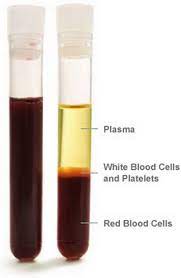 | 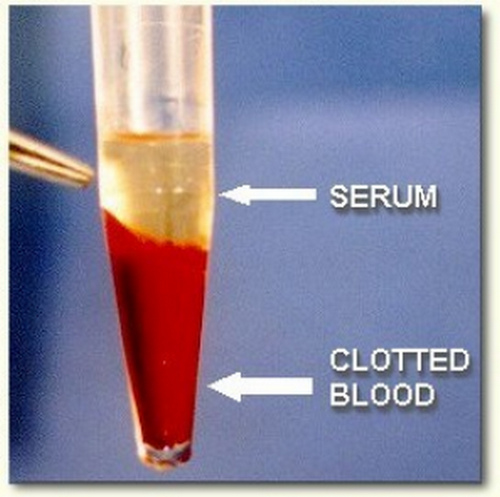 |
Difference Between Plasma and Serum Explained in Details
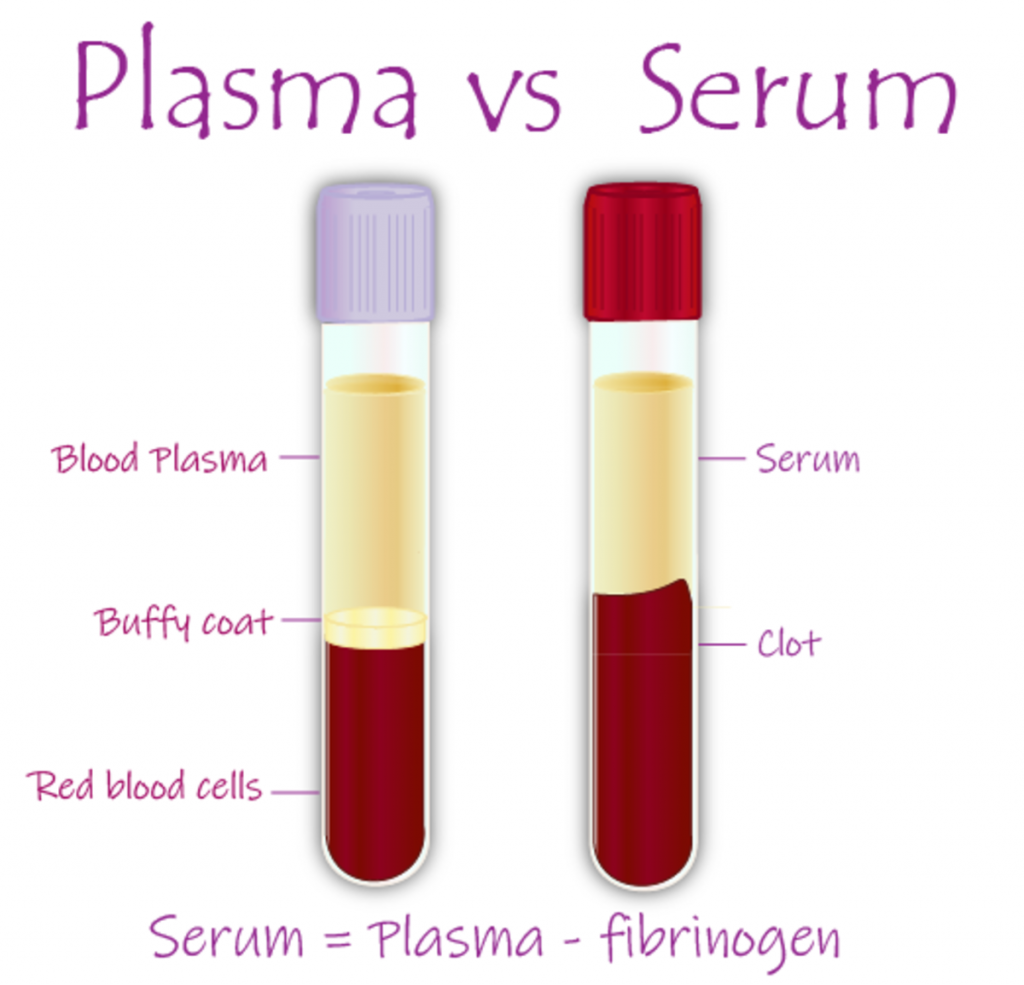
Differences Between Plasma and Serum – Detail Explanation
Differences Between Plasma and Serum in terms of Composition –
- Proteins
Plasma contains a higher concentration of proteins than Serum. Plasma contains albumin, globulins and fibrinogen. Albumin is the most abundant protein in Plasma and is responsible for maintaining the osmotic pressure of the blood. Globulins are involved in transporting various substances in the blood such as hormones, vitamins and minerals. Fibrinogen is a clotting factor that is involved in the formation of blood clots.
- Enzymes
Plasma contains various enzymes such as clotting factors, complement proteins and proteases. These enzymes are involved in various physiological processes such as blood clotting, inflammation and immune response.
Serum contains some enzymes, but their concentration is lower than that in Plasma.
- Electrolytes
Both Plasma and Serum contain electrolytes such as sodium, potassium, chloride, calcium and magnesium. These ions are essential for maintaining the body’s pH balance and for carrying out various physiological processes such as nerve transmission, muscle contraction and enzyme function.
- Lipids
Plasma contains lipids such as cholesterol, triglycerides and phospholipids. These lipids are involved in various physiological processes such as energy storage, membrane structure and hormone synthesis. Serum contains lipids but their concentration is lower than that in Plasma.
- Hormones
Both Plasma and Serum contain hormones which are chemical messengers . They regulate various physiological processes. Hormones are involved in maintaining homeostasis, growth, development and reproductive function.
- Metabolites
Plasma and Serum contain various metabolites such as glucose, amino acids and waste products. These metabolites are involved in various physiological processes such as energy production, protein synthesi waste elimination etc .
Also Check – Difference between Lymph and Plasma
Differences between Plasma and Serum in terms of Clotting Factors
- Clotting Factors
Plasma contains clotting factors such as fibrinogen, prothrombin and other coagulation factors which are essential for blood clotting.
- Removal of Clotting Factors
Serum does not contain these clotting factors as they are removed during the clotting process. When blood is allowed to clot the fibrinogen is converted to fibrin,which forms a clot along with platelets and other blood cells. The clot is then removed and the remaining liquid is Serum which lacks clotting factors.
- Applications
The presence or absence of clotting factors in Plasma and Serum is important for various diagnostic tests and research applications.
For example – some tests require the presence of clotting factors while others require the absence of clotting factors. Serum is often preferred for tests that require the absence of clotting factors such as certain enzyme assays because it does not contain fibrinogen which can interfere with these tests.
- Storage
Plasma and Serum have different storage requirements due to their clotting properties.
Plasma must be stored at low temperatures to prevent clotting while Serum can be stored at higher temperatures.
The storage conditions of these substances can affect the stability of certain components and the accuracy of laboratory results.
Also Check – 13 Important Differences between Lymph and Blood
Differences between Plasma and Serum in terms of Preparation
- Collection Method
Plasma is collected using a tube that contains an anticoagulant to prevent blood from clotting. The blood is then centrifuged to separate the Plasma from the blood cells.
Serum on the other hand is collected using a tube that does not contain an anticoagulant. The blood is allowed to clot before being centrifuged to separate the Serum from the clot and blood cells.
- Time to Process
The time it takes to prepare Plasma and Serum is different. Plasma can be prepared relatively quickly after blood collection typically within 30 minutes because the anticoagulant prevents clotting.
Serum takes longer to prepare typically requiring at least 30 minutes for the blood to clot before the Serum can be separated from the clot and cells.
- Clotting Factors
Plasma contains clotting factors while Serum does not.
This is because the clotting factors are removed during the clotting process which occurs during Serum preparation.
- Coagulation Interference
The presence or absence of clotting factors in Plasma and Serum can affect the accuracy of certain laboratory tests.
For example some tests require clotting factors while others require their absence. Therefore the type of sample used for a particular test can affect the interpretation of the results.
- Storage Conditions
Plasma and Serum have different storage requirements due to their clotting properties. Plasma must be stored at low temperatures to prevent clotting while Serum can be stored at higher temperatures.
Differences between Plasma and Serum in terms of Collection Method
- Anticoagulants
Plasma is collected using an anticoagulant. It prevents the blood from clotting and allows the Plasma to be separated from the blood cells. Common anticoagulants used for Plasma collection include EDTA, citrate, and heparin.
Serum is collected without an anticoagulant and allowed to clot, after which the Serum is separated from the blood cells.
- Preparation Time
Plasma can be prepared from whole blood soon after collection while Serum requires additional processing time to allow for clotting. This affects the turnaround time for test results and other applications.
- Sample Volume
Plasma can be obtained in larger volumes than Serum because it does not require clotting before separation.
- Tube Type
Plasma is collected in tubes that contain an anticoagulant while Serum is collected in tubes without an anticoagulant. The tube types used for collection can affect the type of tests that can be performed on the sample and the stability of the sample during storage.
- Handling Requirements
Plasma contains anticoagulants that’s why it is more prone to hemolysis (breakdown of red blood cells) during handling which can affect the quality of the sample.
Serum is less prone to hemolysis but may require special handling to prevent the formation of fibrin clots.
Differences between Plasma and Serum in terms of Diseases and Disorders
- Hematological Disorders
Plasma and Serum can be used for the diagnosis and monitoring of haematological disorders such as anaemia, leukaemia and lymphoma.
Plasma is commonly used for tests that measure clotting factors while Serum is used for tests that measure red blood cells, white blood cells and platelets.
- Metabolic Disorders
Plasma and Serum can be used for the diagnosis and monitoring of metabolic disorders such as diabetes, dyslipidemia and liver disease.
Plasma is typically used for tests that measure glucose, electrolytes and enzymes .
Serum is used for tests that measure lipids and liver function.
- Autoimmune Disorders
Plasma and Serum can be used for the diagnosis and monitoring of autoimmune disorders such as rheumatoid arthritis, lupus and multiple sclerosis.
Plasma is used for tests that measure autoantibodies. Serum is used for tests that measure complement proteins.
- Infectious Diseases
Both Plasma and Serum can be used for the diagnosis and monitoring of infectious diseases such as HIV, hepatitis and COVID-19.
- Cancer
Plasma and Serum can be used for the detection and monitoring of cancer biomarkers although the choice of sample type may depend on the specific biomarker being tested for. Some biomarkers may be more readily detected in plasm while others may be more readily detected in Serum.
Differences between Plasma and Serum in terms of Clinical Significance
- Diagnostic Testing
Both Plasma and Serum are commonly used for diagnostic testing in clinical settings although the choice of sample type may depend on the specific test being performed and the clinical context. For example Plasma may be preferred for tests that measure clotting factors while Serum may be preferred for tests that measure antibodies.
- Therapeutic Monitoring
Plasma and Serum can also be used for therapeutic monitoring such as monitoring the levels of drugs or therapeutic proteins in the blood. Here also the choice of sample type may depend on the specific therapeutic agent being monitored and the assay being used.
- Research
Plasma and Serum are commonly used in research settings for the identification and quantification of biomarkers as well as for the study of disease pathogenesis and the development of new therapies. choice of sample type may depend on the specific research question being addressed and the experimental design.
- Blood Transfusion
Plasma and Serum are both used in blood transfusion medicine although Plasma is used more commonly due to its role in coagulation.
Plasma can be used to replace clotting factors in patients with bleeding disorders while Serum is not typically used for this purpose.
- Haematology
Plasma and Serum are both important components in the study and diagnosis of haematological disorders such as anaemia, leukaemia and lymphoma.
Plasma is used for tests that measure clotting factors while Serum is used for tests that measure blood cells and platelets.
Similarities Between Plasma and Serum
Despite lot of important Differences between Plasma and Serum they have few similarities
- Both Plasma and Serum are liquid components of blood that make up about 55% of the total volume of blood.
- Both Plasma and Serum contain hormones that regulate various physiological functions, including growth, development, metabolism and reproduction.
- Both Plasma and Serum contain electrolytes, hormones, metabolites and other components that are essential for maintaining homeostasis and carrying out biological functions.
- Both Plasma and Serum are used for diagnostic and research purposes in various medical fields such as haematology, immunology and oncology.
- Both Plasma and Serum can be obtained from blood samples using similar methods such as centrifugation and separation techniques.
- Both Plasma and Serum can be stored for long periods of time under appropriate conditions to maintain their stability and usefulness in research and clinical applications.
Curious Questions on Plasma and Serum
What is plasma, and how is it different from serum?
Plasma is the liquid component of blood containing clotting factors, while serum is the liquid that remains after clotting factors have been removed from plasma.
Why is plasma used in blood transfusions and not serum?
Plasma is used in blood transfusions due to its clotting factors, which are crucial for coagulation disorders. Serum, lacking these factors, is less suitable for transfusions.
Can serum be used to treat diseases?
Serum is used in diagnostic tests for diseases like viral infections and electrolyte imbalances, but it’s not typically used for treatment like plasma.
How are plasma and serum collected differently?
Plasma is collected using anticoagulants to prevent clotting, while serum is collected without anticoagulants, allowing blood to clot before it’s separated.
Why does serum take longer to prepare than plasma?
Serum preparation requires blood to clot first, which usually takes 30 minutes to an hour, whereas plasma is separated immediately after collection.
Do plasma and serum contain the same types of proteins?
Both contain proteins, but plasma has a higher concentration, including clotting proteins like fibrinogen not found in serum.
Can plasma and serum be used interchangeably in medical tests?
Not always. The choice depends on the test’s requirements, such as the need for clotting factors in plasma or their absence in serum.
What roles do plasma and serum play in the immune system?
Both transport nutrients, hormones, and waste products and play roles in immune defense and maintaining pH and electrolyte balance.
How is the shelf life of plasma and serum different?
Plasma has a longer shelf life when frozen, while serum’s shelf life is shorter as clotting factors can break down over time.
Why does plasma contain more water than serum?
Plasma’s higher water content (about 92%) is due to its role in transporting various substances, including those removed in serum (about 90% water).
Are electrolytes found in both plasma and serum?
Yes, both plasma and serum contain electrolytes like sodium, potassium, chloride, calcium, and magnesium.
How do plasma and serum contribute to disease diagnosis?
Plasma is used in diagnosing coagulation disorders, autoimmune diseases, and viral infections, while serum is used for viral infections and electrolyte imbalances.
Can plasma and serum be stored at room temperature?
No, plasma must be stored at low temperatures to prevent clotting, while serum has different storage requirements.
Why is fibrinogen present in plasma but not in serum?
Fibrinogen, a clotting factor, is removed from plasma during the clotting process that forms serum.
How does the density of plasma compare to serum?
Plasma has a slightly higher density (1.025 g/mL) compared to serum (1.024 g/mL) due to its different components.
What is the significance of anticoagulants in plasma collection?
Anticoagulants prevent blood clotting during plasma collection, ensuring all its components, including clotting factors, are retained.
Are there any diseases where serum is preferred over plasma for testing?
Yes, serum is often preferred for tests that require the absence of clotting factors, such as certain enzyme assays.
Also Check – 15 Important Differences Between Arteries and Veins
Also Check – 8 Structural and Functional Difference Between Arteries Veins and Capillaries
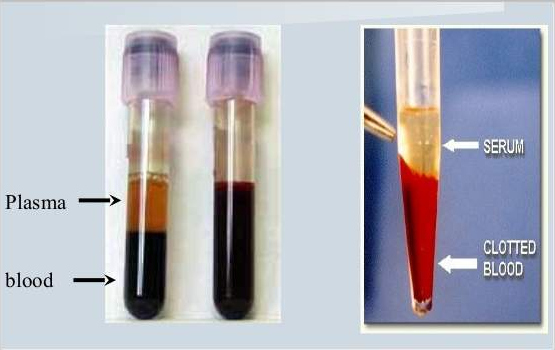
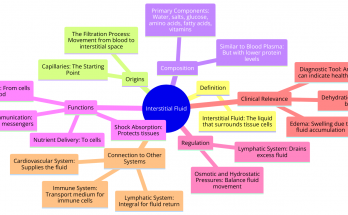
One Comment on “22 Differences Between Plasma and Serum”